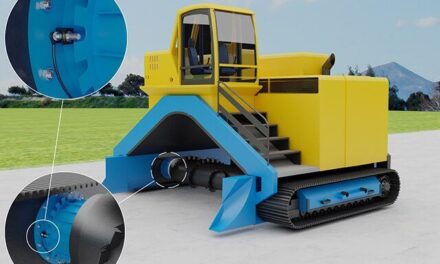
David Hannaby, product manager vision and measurement, SICK (UK), looks into the milestones in vision technology and how the technology is vital for maintaining quality in the food industry
Today, inspection technology is a vital part of quality control in food processing and packaging, and developments in camera system performance have opened up new information potential. For most engineers, however, this potential has only recently been realised in the factory environment due to such factors as the usability of the technology, its robustness and the applicability of the operating software.
While 2D vision, with simple dimensional and positional data, enabled a degree of quality control and product picking a few years ago, the market has since progressed through ever more powerful variants of 3D vision technology. But the move from 2D to 3D was often marred by difficulties in hardware set up, as well as complex software configuration and its integration with SCADA. The need for separate lighting equipment and multiple cameras compounded the software difficulties, compromising the required quality and consistency.
The next generation of single unit 3D vision cameras featured integrated lighting. This narrow beam laser scanning added a 3D profile to be integrated with the 2D shape and size, resulting in more parameters for quality assessment.
At the same time, the combination of intuitive set up and configuration, and more powerful software to process the digital image quickly, simplified operation. The speed and power of the image capture facilitated quality decision making which started to match conveyor and packaging line speeds. This meant that procedures such as portion and volume control, as well as out of specification item rejection, could be added to picking position and packing capabilities.
At the end of 2010, camera software development resulted in full 3D data capture, and full colour vision has added more quality information as the original step from 2D to 3D.
In addition to shape, size and surface irregularities, colour defects can now also be monitored. A line picking baked goods from a belt for packing, for example, is now able to offer control and feedback on the degree of cooking, within set shades. Other applications include detecting and monitoring colour changes in print and logos on packaging.
Inspection
3D inspection with vision cameras has now started to become the market norm. This offers easy to set up and use software, complemented by full integration with typical factory SCADA systems and communications protocols. Increasingly wider acceptance of the value of 3D and colour, plus more equipment availability, will be the result. There will also be further software developments and the improvements should enable the plant engineer to integrate the technology more completely with factory distributed control systems. Furthermore, increasingly rapid feedback from the vision system to the production process will allow adjustment for ‘instant’ fault rectification at ever faster packaging line speeds.
The benefits offered by the new 3D vision systems are directly leading to food processing and packaging quality improvements and reduced wastage.
With the need to meet the highest quality in food and packaging, vision inspection aims to maintain consistency throughout each production shift. In fact it is now possible to match or improve on the human eye for quality, and exceed it for fatigue resistance and attention span.

